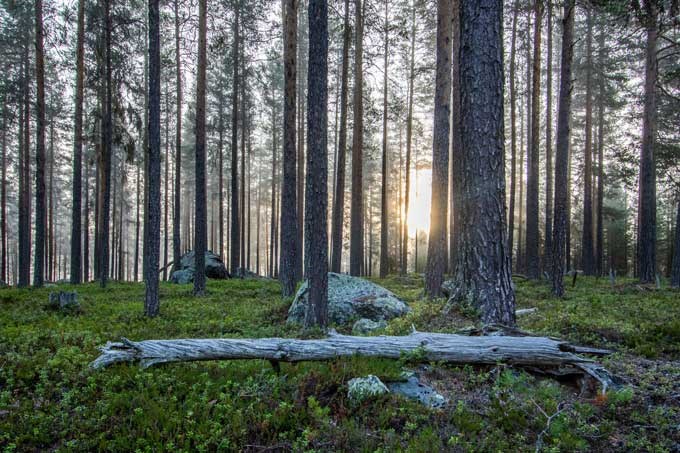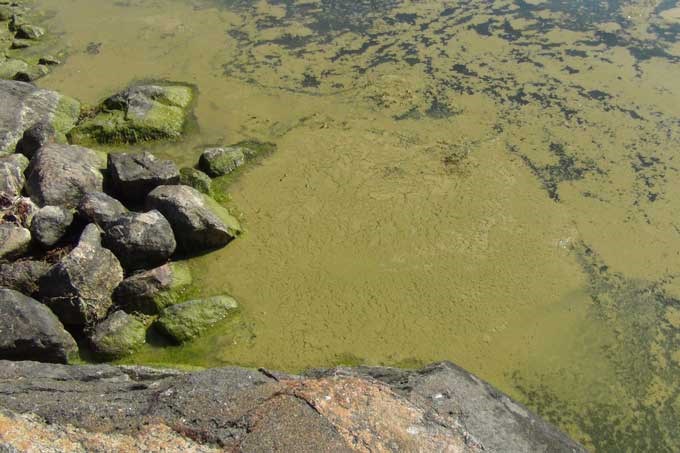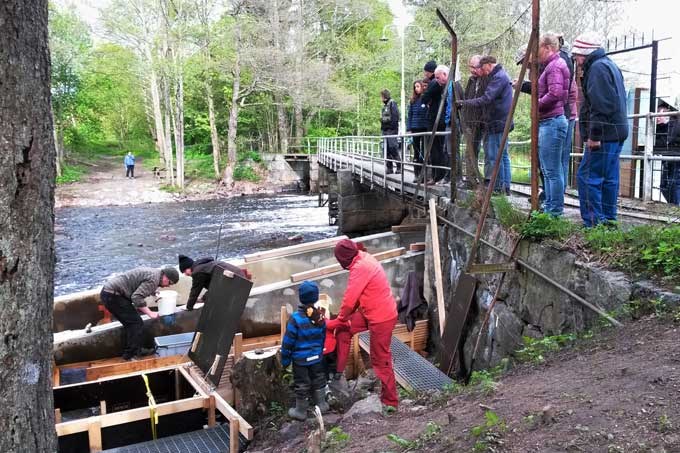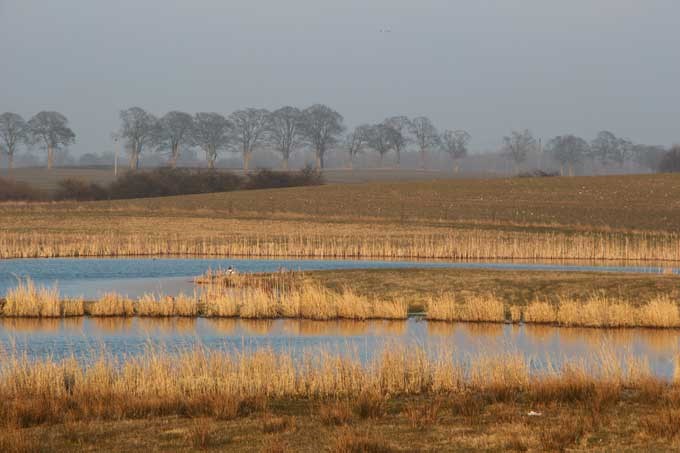Lectures by senior environmental assessment specialists at SLU 2021
On this page you find information on the lectures by senior environmental assessment specialists at SLU held in 2021. Learn more about the lecturers areas of expertise and find recordings and other documentation.
The lectures of senior environmental specialists lecturing 2021 ranged from forest statistics (Jonas Fridman), eutrophication of waters (Lars Sonesten), management of Baltic Salmon stocks (Johan Dannewitz) to keeping tabs on the sustainability of agriculture (Katarina Kyllmar).
Documentation from the lectures 2021
Below you can learn more about their individual special areas in lecture summaries and you can also download their presentations.
Jonas Fridman 2021: Official statistics from the Swedish National Forest Inventory at SLU – a common denominator in the polarised debate about forests?
Official statistics from the Swedish National Forest Inventory at SLU – a common denominator in the polarised debate about forests?
Lecturer: Jonas Fridman, Research Group Leader at the Department of Forest Resource Management.
Moderator: Hans Petersson, Researcher at the Department of Forest Resource Management.
Presentation from the lecture (pdf).
Summary
Raw materials from the forest have always been and still are important resources for human welfare. As early as 1558, King Gustav Vasa stipulated in a decree that no one except the King was allowed to cut, fell, break or bark either oak or beech, and in 1647 a forest ordinance was issued which is considered Sweden's first forest legislation, regulating how Sweden's forests must be used and managed. The most important task of the forest during this time is without a doubt to ensure a long-term production of raw materials for wood products, oak and beech acorns, charcoal, tar and potash. The craving for forest raw materials, and the pressure on the forest, is now increasing sharply and with the abolition of English import taxes on wood in 1866, there was a major expansion of sawmills, especially in Norrland. Concerns that the raw material will not be enough are great and to get a basis for whether there is a shortage or not and information about the forest state, the first National Forest Inventory (RT) starts in 1923. The results were published in 1932 (SOU 1932: 26).
From this time until the beginning of the 1990s, RT focuses on providing a basis for the forest's role as a raw material supplier to the forest industry. With the UN Conference on Environment and Development in Rio in 1992 and the drafting of the new Forest Act, where environmental and production goals must weigh equally, an expansion of RT was initiated to also be able to follow the development of the environmental condition. Most important in this respect is the introduction of an inventory of all dead wood, an inventory within formally protected areas, a description of multi-layer forests and a more detailed species list for the tree species.
Already when the national environmental objectives system was adopted by the Swedish Parliament in 1999, RT provided data for three indicators within the environmental quality objective “Living forests”; the area of older deciduous forest, the area of old forest and the amount of hard dead wood. In the climate context, the change in the forest's carbon content in the timber stock of living and dead trees are important components in the reporting to the Climate Convention and the Kyoto Protocol, which is based on data from RT.
Today's debate about the forest, both regarding the environmental condition and the role of the forest for the climate, has become strongly polarized in many ways. Representatives of NGO´s, government agencies, some politicians and researchers believe that the forest's environmental condition is poor and deteriorates with an endangered biodiversity and advocates increased area protection and changed forestry methods. Representatives of the forest industry, the forest owners' association, other politicians and researchers believe instead that the environmental condition is not so bad, has improved in recent years and that active forestry is better for the climate than letting the forest be used only as a carbon stock.
Data from RT and the climate reporting are widely used in the debate but interpreted in different ways and different references are used when describing changes or differences. In summary, data from RT are important in the polarised debate, but as a producer of official statistics, RT cannot influence which references debaters use.
Lars Sonesten 2021: Reduced eutrophication requires knowledge from source to sea
Reduced eutrophication requires knowledge from source to sea
Lecturer: Lars Sonesten, Researcher at the Department of Aquatic Sciences and Assessment.
Moderator: Åsa Berggren, Professor at the Department of Ecology.
Presentation from the lecture (pdf).
Summary
The media often report on various environmental problems in our coastal and marine areas. Actually, this is nothing new. In the 1960s and 70s, eutrophication was a fact, but then in our lakes. What has happened now is that the problems have moved further away from us, out to the sea.
SLU monitors the environmental condition of Sweden's lakes and watercourses, which we have been doing since the mid-1960s. What is in our lakes and watercourses will sooner or later end-up in the Sea and within the Swedish environmental monitoring have estimated the load of for example nutrients and metals into the sea for more than 50 years. Our valuable long time series are used for Sweden to be able to monitor the development of the national environmental goals, but also for us to be able to report internationally on our loads to the oceans. You can easily access the data collected within the national data hosting for lakes and watercourses via the SLU data portal Miljödata-MVM.
SLU participates in the international organizations HELCOM (for the Baltic Sea) and OSPAR (for the Northeast Atlantic). Here we work together with other coastal states to improve the condition of our common seas. Important work tools are partly the results from SLU's environmental monitoring, but also our knowledge of the sources of this load.
In HELCOM, the countries have together decided on input ceilings for how much nutrients the various parts of the Baltic Sea can handle, if we want an acceptable water quality. This is within the so-called Baltic Sea Action Plan. In order to monitor the trends and whether the countries achieve the goals, annual reports are made on how much nutrients have reached the sea. Within the framework of OSPAR, a corresponding work is underway to produce input ceilings.
Agriculture and forestry are important sources for the transport of nutrients from land to the sea. Agriculture in particular accounts for a large part of the human-caused nutrient loss in southern Sweden. It is important to reduce nutrient losses and, by extension, eutrophication of the oceans, and SLU has expertise in effective measures. We are happy to share that knowledge both domestically and internationally.
Within environmental monitoring, there is a constant development through SLU's research. Here it is important with progress, but not too fast to ensure that our long time series continue to be comparable over time. Regarding the input of various environmental pollutants into our sea areas, we see a development potential. SLU's data have for a long time included metals, but we still lack continuous monitoring of organic pollutants, pharmaceutical and veterinary residues, plastic particles and other littering.
Our sea areas are large and slow reacting ecosystems where long-term and persistent work is important. A fun part of this work is to constantly educate and enthuse our students, because it is above all for their and their children's that we try to reduce the human impact on the sea, so that they may experience a sea with a good water quality.
Johan Dannewitz 2021: Managing the salmon stocks of the Baltic Sea - How hard can it be?
Managing the salmon stocks of the Baltic Sea - How hard can it be?
Lecturer: Johan Dannewitz, Researcher at the Department of Aquatic Resources.
Moderator: Richard Johnson, Professor at the Department of Aquatic Sciences and Assessment.
Presentation from the lecture (pdf).
Summary
In the Baltic Sea, there are 27 rivers with wild, self-reproducing salmon populations. Many of these were threatened during the 1980s and 90s, but most populations have recovered in the last 20 years. Reduced fishing in the sea, river restorations and reduced mortality in the salmon disease M74 are factors that have contributed to the recovery. Today, salmon populations in the Gulf of Bothnia have generally good status and several have achieved the management objectives set up within the EU's common fisheries policy. In the southern Baltic Sea, however, there are several small river populations with low status, and those have not responded positively to previous reductions in exploitation levels.
SLU coordinates the data collection on Swedish salmon populations in the Baltic Sea, and participates in the International Council for the Exploration of the Sea's (ICES) working group, which makes annual status evaluations and forecasts of the future development of salmon populations. These analyses form the basis for ICES advice to the EU ahead of the annual quota negotiations. SLU also has an important advisory function for national management authorities, for example the Swedish Agency for Marine and Water Management responsible for the management of salmon fisheries in Sweden. Salmon populations are monitored by electrofishing in rivers and counting of out-migrating young salmons (smolts) and returning adult salmon in river mouths. In addition, recreational catches are estimated and official catch statistics from commercial fisheries are compiled. All this information is then used as input data in the analyses carried out within ICES.
The fact that the Baltic salmon consists of many genetically distinct populations with varying status is a challenge for management. The species is exploited both in the sea, along the coasts and in rivers. Fishing takes place sequentially; first in sea fisheries in the southern Baltic Sea, then during the spawning migrations along the coasts and finally in river fisheries. The sea and coastal fisheries mainly target mixed stocks. Management on the international level is based on an EU quota, divided between member states according to a politically decided distribution key. Under current conditions with considerable variation in population status, this rather blunt management system is associated with difficult trade-offs between exploitation possibilities, the time required to achieve management objectives, and protection of weak stocks.
In Sweden, there is a stated ambition to develop the management of Baltic salmon to become more population-specific, and take into account ecosystem considerations. Such a development would be advantageous by e.g. enabling faster recovery of currently weak salmon populations. A management system that takes into account status of individual populations, and account for ecosystem considerations, is expected to place increased demands on the biological advice delivered by SLU. To meet these demands, a model has been developed at SLU that makes it possible to estimate the composition of salmon populations in different coastal areas and during different time periods, which enables advice on how fishing should be managed to reduce the exploitation of weak populations. Large-scale compensatory releases of reared salmon, that have been ongoing for decades, constitutes another important issue for the management, as this activity is associated with genetic risks according to recently published research from SLU.
Katarina Kyllmar 2021: Environmental measures in agriculture is monitored by SLU
Environmental measures in agriculture is monitored by SLU
Lecturer: Katarina Kyllmar, Research Group Leader at the Department of Soil and Environment.
Moderator: Richard Johnson, Professor at the Department of Aquatic Sciences and Assessment.
Presentation from the lecture (pdf).
Summary
The agricultural landscape has evolved where natural conditions are most favorable for agricultural production meaning where the soils often are naturally rich in nutrients. Although, the variations in agricultural production types are large, depending on soil type, climate and hydrology. On clay soils, growing of cereals and oilseeds dominate, while on farms with coarser soils, grass and animal husbandry are more common.
These nutrient-rich systems will always have nutrient losses. Comprehensiveness of these systems constitute a basis for improving and developing measures to reduce the impact on the environment.
Within environmental monitoring and assessment, the approach includes not only the specific environmental issues but also the methods used. Long-term measurements, robust data storage and integration of data sources in assessments provide information on the effects of measures in agriculture. Environmental analysis also provides a basis for identifying areas with potential for mitigation measures.
For effective implementation of mitigation measures in agriculture and for the aim to achieve sustainability goals, the feedback approach in assessment constantly need to be improved as new knowledge on measures and processes emerges. This requires cooperation between research topics and collaboration with authorities, municipalities, water organizations and farmers who work in practice to improve the environment.



